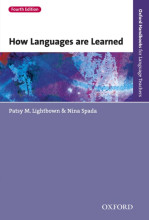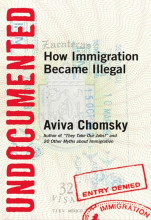Summary: How Languages Are Learned 4Th Edition | 9780194541299 | Patsy M Lightbown, et al
- This + 400k other summaries
- A unique study and practice tool
- Never study anything twice again
- Get the grades you hope for
- 100% sure, 100% understanding
Read the summary and the most important questions on How Languages are Learned 4th edition | 9780194541299 | Patsy M. Lightbown; Nina Spada
-
1 Language learning in early childhood
-
What are babies able to understand and use at 12 months?
They can understand quite a few frequently repeated words in the language or languages spoken around them -
What are babies able to understand and use the first few months?
Earliest vocalization = crying (then cooing and gurgling sounds)
They can distinguish the voice of their mother & can recognize the language that was spoken around their mother (even before they were born) -
What are babies able to understand and use by the age of two?
they canproduce approximately 50 words &combine them into two wordsentences (“telegraphic ”sentences ) -
How many grammatical morphemes are there (according to Roger Brown)
14 -
8 Glossary
This is a preview. There are 122 more flashcards available for chapter 8
Show more cards here -
American Sign Language (ASL):
The gestural language used by many North Americans who are deaf or who interact with others who are deaf. It is a true language, with complex rules of structure and a rich vocabulary, all expressed through motions of the hands and body. -
classroom observation scheme:
A tool (often in the form of a grid) that consists of a set of predetermined categories used to record and describe teaching and learning behaviours. -
communicative language teaching (CLT):
CLT is based on the premise that successful language learning involves not only a knowledge of the structures and forms of a language, but also the functions and purposes that a language serves in different communicative settings. This approach to teaching emphasizes the communication of meaning in interaction rather than the practice and manipulation of grammatical forms in isolation. -
comprehensible output hypothesis:
The hypothesis that successful second language acquisition depends on learners producing language (oral or written). Swain (1985) proposed this hypothesis in response to Krashen’s (1985) comprehensible input hypothesis. -
content and language-integrated learning (CLIL):
An approach to content-based language teaching that has been developed primarily in secondary schools in Europe. -
content-based language teaching (CBLT):
Second language instruction in which lessons are organized around subject matter rather than language points. For example, in immersion programmes, students study science, history, mathematics, etc. in their second language.
- Higher grades + faster learning
- Never study anything twice
- 100% sure, 100% understanding

































